How to be Cool (According to a Video Game Magazine From 1982)
Learn how to behave yourself in the arcades of the ’80s from this old magazine article.
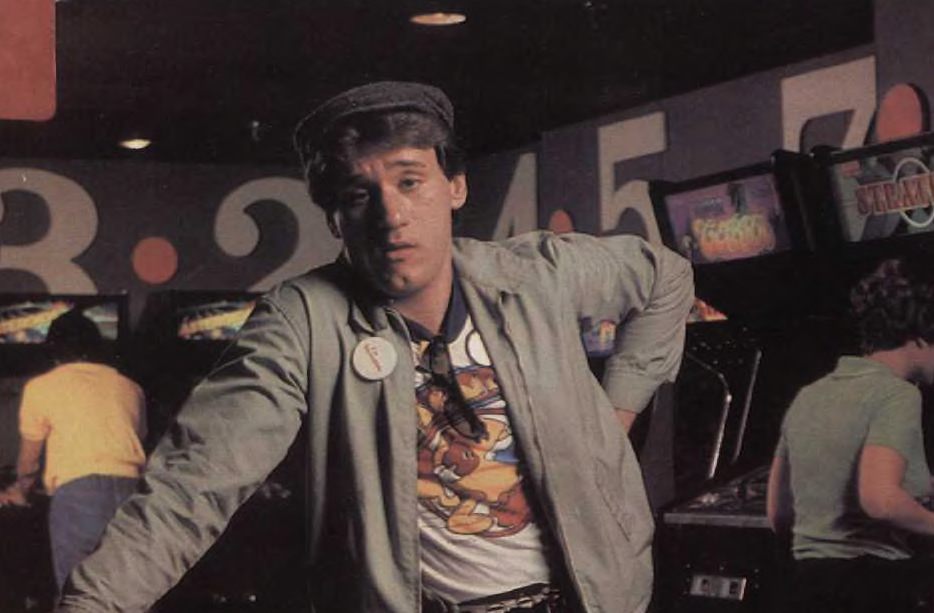
Meet Art Cater, the coolest dude of the arcades of 1982. (All images: Video Games Player Magazine/Fair Use)
Today when people think of arcades they probably imagine expensive niche locations like a Dave & Busters, but back in 1982, arcades were ubiquitous gathering places where people of all ages could come and hang out, competing to conquer each other’s high scores. The arcade was the new soda shop or juke joint, and that came with its own set of standards and etiquette.
Fortunately, the very first issue of early 1980s video game magazine Video Games Player put together a singularly silly guide to arcade do’s and don’ts. Video Games Player was one of a glut of periodicals that came out during the early 1980s, trying to embrace the arcade boom and the burgeoning video game culture. The four-page photo article follows “Art Cater” (“arcader,” get it?) as he bumbles his way through a night at his local arcade.
In addition to being pretty goofy by today’s standards, the short piece provides an interesting look into an arcade culture that has been lost forever. Let’s take a look.

“You’ve got to know how to look. You’ve got to know how to move. You’ve got to be cool.” When this was published, arcades were places where the cool kids (or at least the cool kids of the arcade) would hang out. So no matter how strange it sounds that you might need to tell video game nerds to turn down their “Wyatt Earp” swagger, humility wasn’t bad advice.
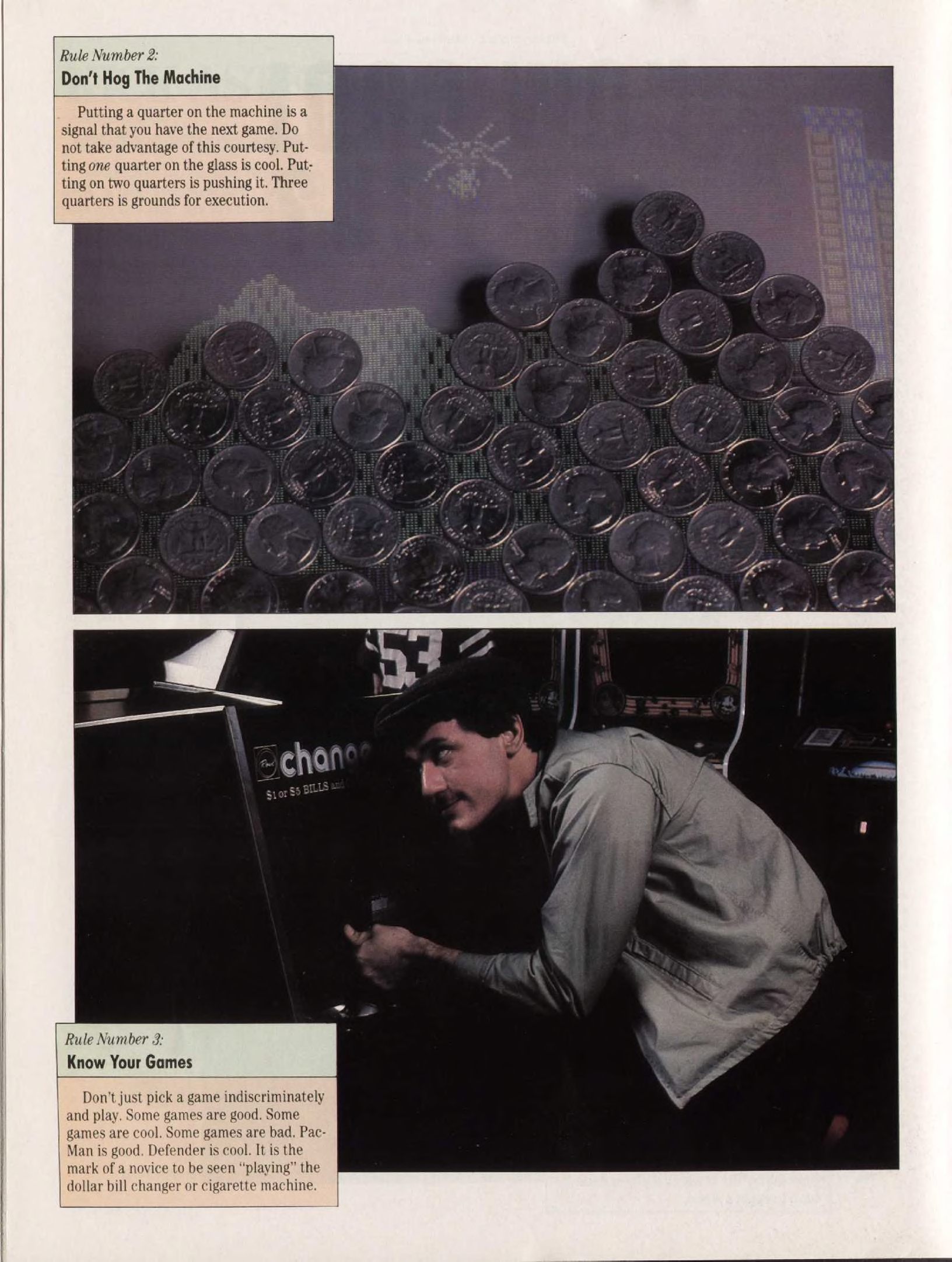
“Some games are bad. Some games are cool. Some games are bad.” Words to live by. Back before we all had every game we could ever want on our phones or next-generation consoles, if you wanted to play a video game, you had to queue up at an arcade cabinet. If someone was already playing the game you wanted to play, it was customary to put a quarter on the machine, but as Video Games Player points out, it was bad form to load up coins without giving other players a chance to jump in. Not sure what the “Know Your Games” bit is about, but it does remind us that arcades used to have cigarette machines.
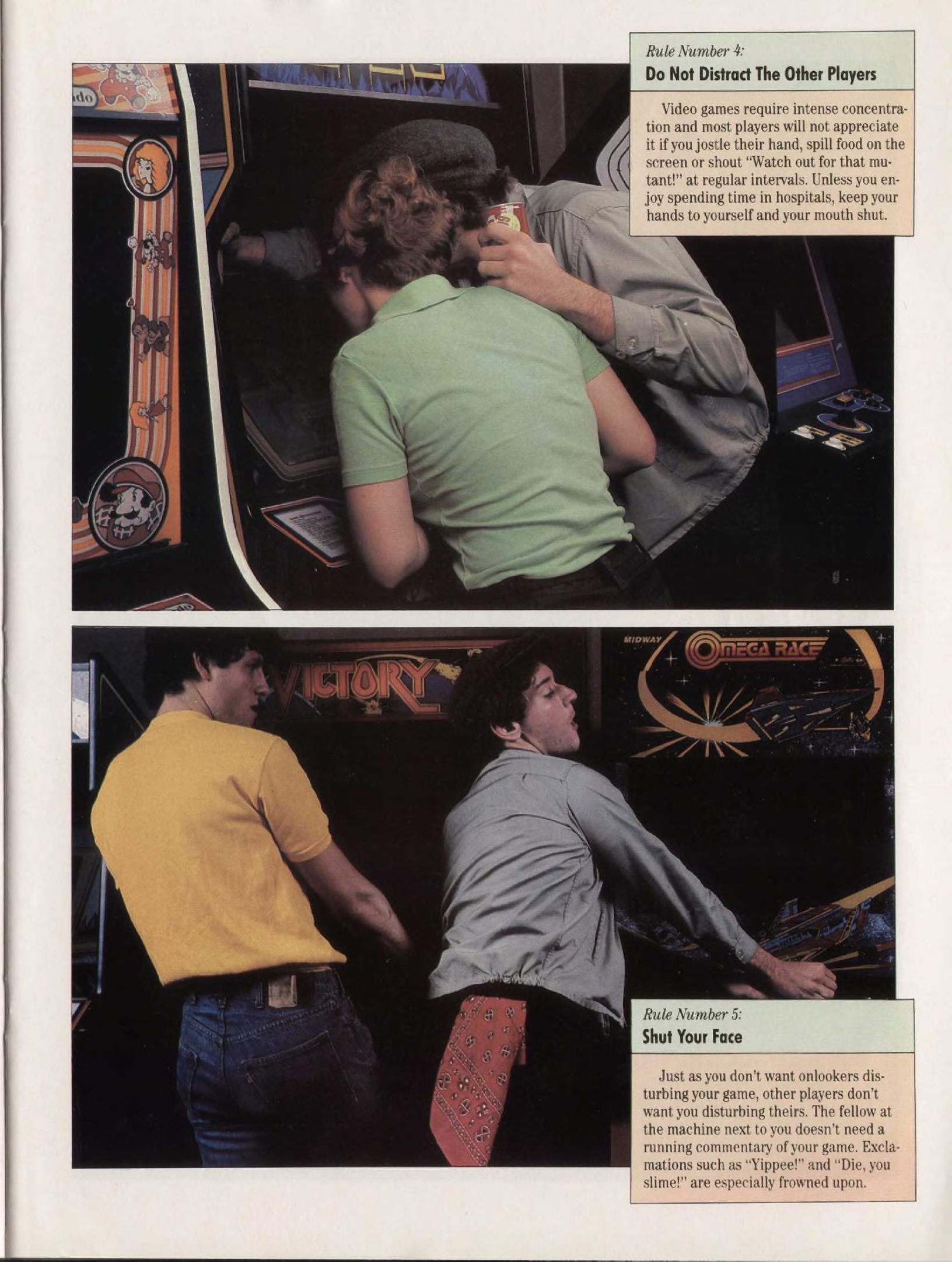
“Exclamations such as ‘Yippee!’ and ‘Die, you slime!’ are especially frowned upon.” While it seems like every video game on the market these days has a multiplayer element, playing games at the arcade was generally a solitary, if competitive, pastime. No one likes being crowded by someone trying to peer over your shoulder, which was a pretty common occurrence in an arcade. As to “Shut Your Face,” that advice is as relevant to the gaming community today, with its often toxic and hurtful speech, as it was back in 1982.
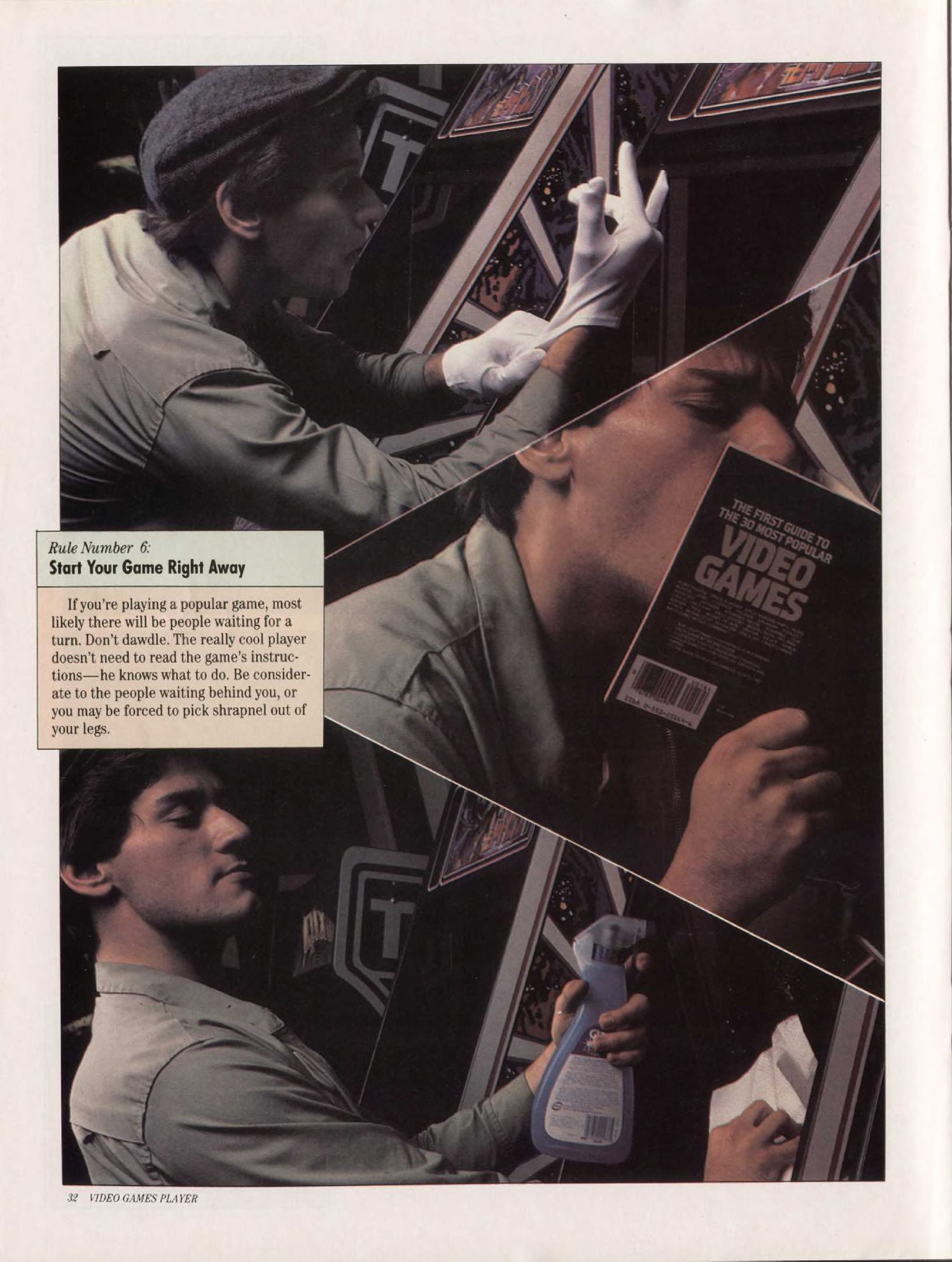
“Be respectful to the people waiting behind you, or you may be forced to pick shrapnel out of your legs.” It was also bad form to stand in front of a game and prevent other players from getting to it as you gear up. Cool dudes at the arcade can just sidle up and start playing.
Of note is the hint book Art Cater is reading, which recalls another artifact of the era: cheap paperbacks that were filled with cheats and tricks for any of the popular games of the day. These were equivalent to the endless internet walkthroughs available for every single video game today. If your favorite game wasn’t featured in the book you bought, you were simply out of luck.
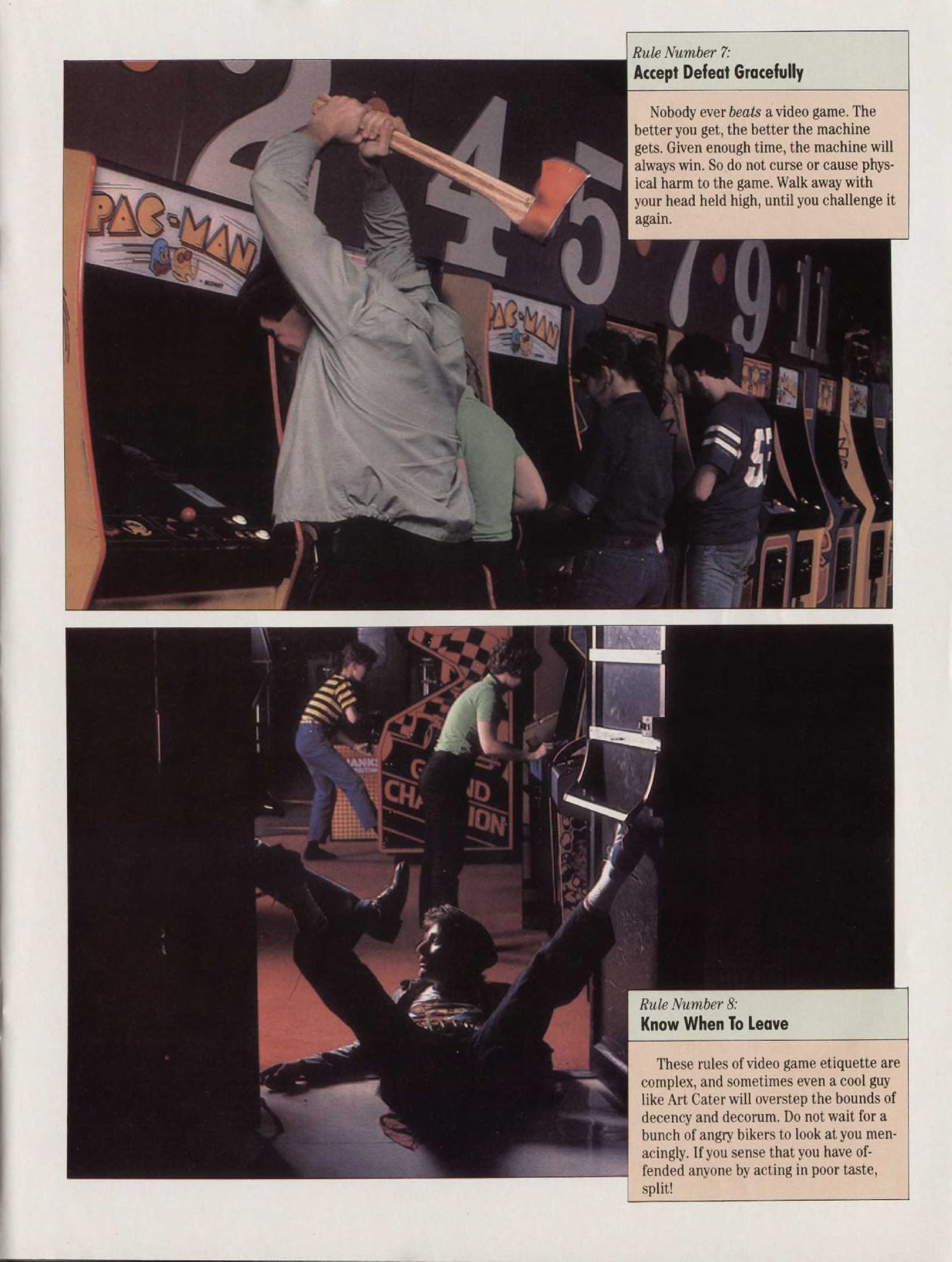
“Do not wait for a bunch of angry bikers to look at you menacingly.” Interestingly, Rule Number 7 points out that video games can never actually be beaten, which was, at the time, very true. Instead of the more closed narrative games of today, most arcade games in 1982 had no real end—the difficulty just increased until a player couldn’t keep going. Knowing when to leave is another bit of good advice, although one has to wonder how many angry bikers were hanging out at coin-op arcades.


-41413e23-403d-4255-a911-19ba3fae6f1d.webp)




Follow us on Twitter to get the latest on the world's hidden wonders.
Like us on Facebook to get the latest on the world's hidden wonders.
Follow us on Twitter Like us on Facebook